An eco-design approach at the heart of our industrial process
To minimize the impact of our production on the environment, we implement a rigorous eco-design approach from the start of the project. We also encourage our partners to adopt this commitment, which we combine with Life Cycle Assessments to measure the impact of this action.
Our goal: to sustainably reduce our carbon impact at all stages of production, by acting in particular on the weight of the bottles and jars, without any perceived loss of value for the end consumer.
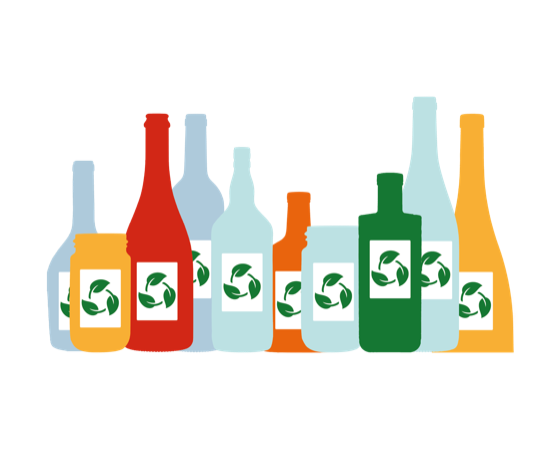
Selection and mixing of raw materials
We use cullet to produce new glass packaging while saving raw materials and reducing our energy consumption. This broken glass comes from manufacturing waste, selective waste collection or recycling containers. It is mixed with other complementary raw materials: 71% sand, 14% soda ash, 11% limestone and 4% various constituents to color the glass.
54.1% external cullet integrated into our production in 2023
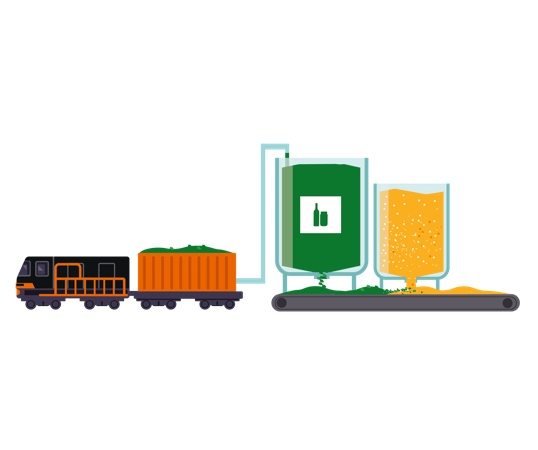
The melting or transformation of the material
1,550°C: this is the temperature at which the furnaces must heat the mixture of solid raw materials (cullet, sand, soda ash, calcium carbonate) for about 24 hours so that the molten glass is perfectly homogeneous and can flow through distribution channels to the forming machines where the glass molds are located.
All our furnaces now run on 84% gas, 10% fuel oil and 6% electricity in the melting section.
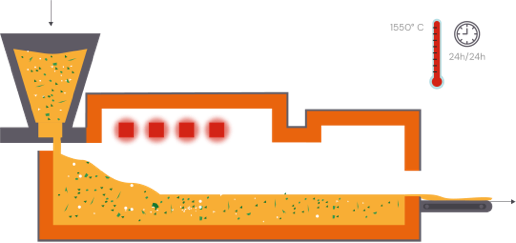
When the glass takes shape
Prepared then blown in two stages (in the blank mold, then in the finishing mold), the glass is shaped into its final design. The glass bottles and jars come out of the machines at temperatures above 500°C.
On some production lines, called “flex lines”, the use of versatile machines allows us to produce up to three different types of items on the same production line.
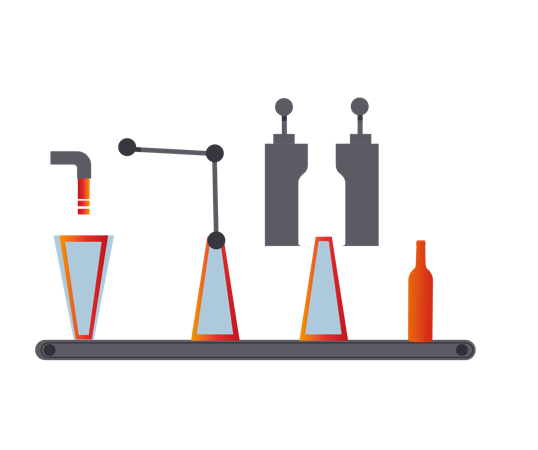
Annealing arch, a guarantee of maximum solidity
The function of the annealing arch is to relieve internal stresses in the glass. This tunnel furnace ensures the solidity of the glass containers, which receive a scratch-resistant treatment at the exit of the arch.
Several of our plants are equipped with a system to recover the fatal heat from the annealing arches to heat our buildings and domestic hot water.

Inspection and delivery
Before shipping glass bottles and jars, it is essential to precisely control the corking, pressure resistance for sparkling beverages, dimensions, glass thickness and aesthetics using state-of-the-art equipment. After checking each bottle and jar, they are finally placed on pallets, made of reusable or recyclable materials, and then protected by a cover.
Our control equipment allows us to guarantee quality on a wide range of items from 30 milliliters to 15 liters.
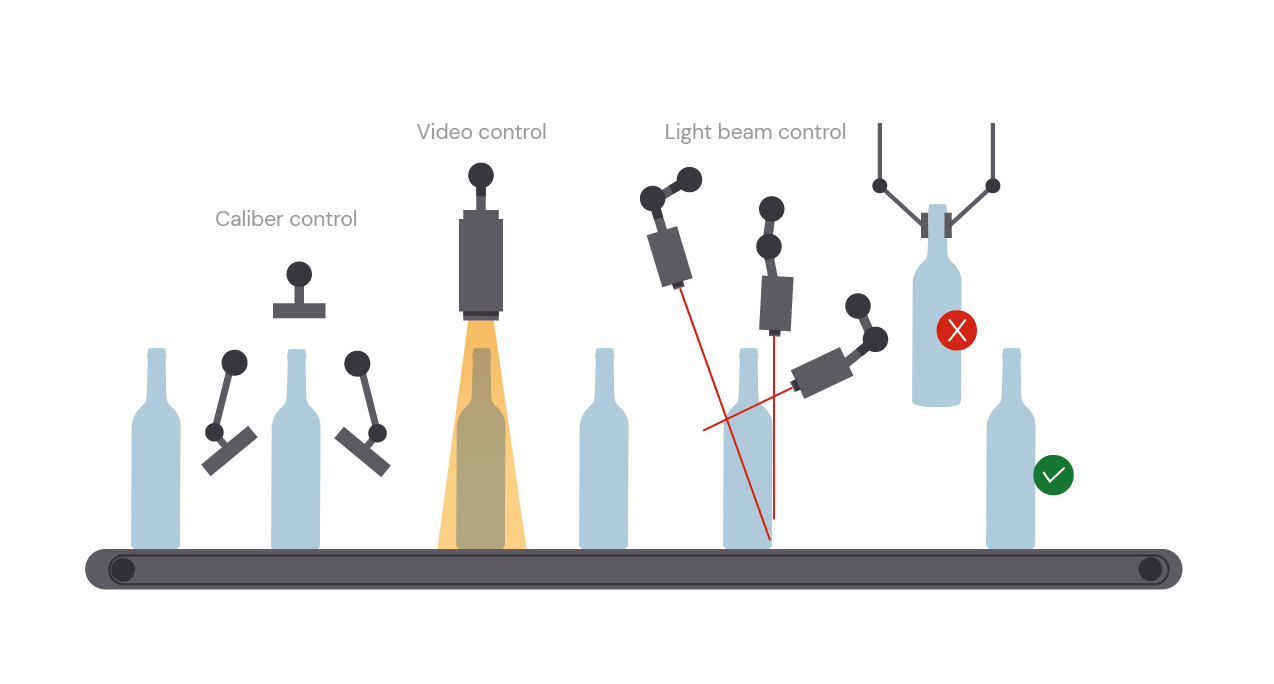
An internal recycling circuit to minimize our impact on the environment
Most of our plants recycle all the cullet from their own production and, wherever possible, provide an outlet for used cullet from outside. We have invested in 8 cullet processing centers where used glass is sorted, cleaned of impurities and crushed to become clean cullet, ready for use in the manufacture of new glass.
We support the European action platform, “Close the Glass Loop”, which aims to increase the glass collection rate to 90% by 2030.

For Verallia, Industry 4.0 means digitizing our industrial equipment and thus improving the connectivity of our production line.
Glass is the reference and preferred packaging material for spirits, wine, beer and food. Infinitely recyclable 100% without loss of quality, it is a “permanent” material at the heart of the circular economy…